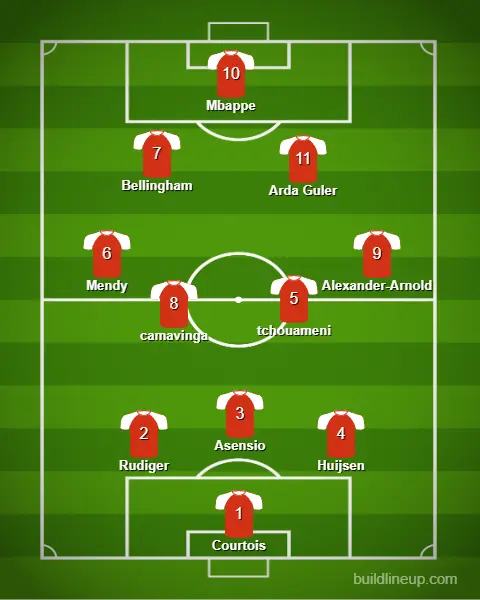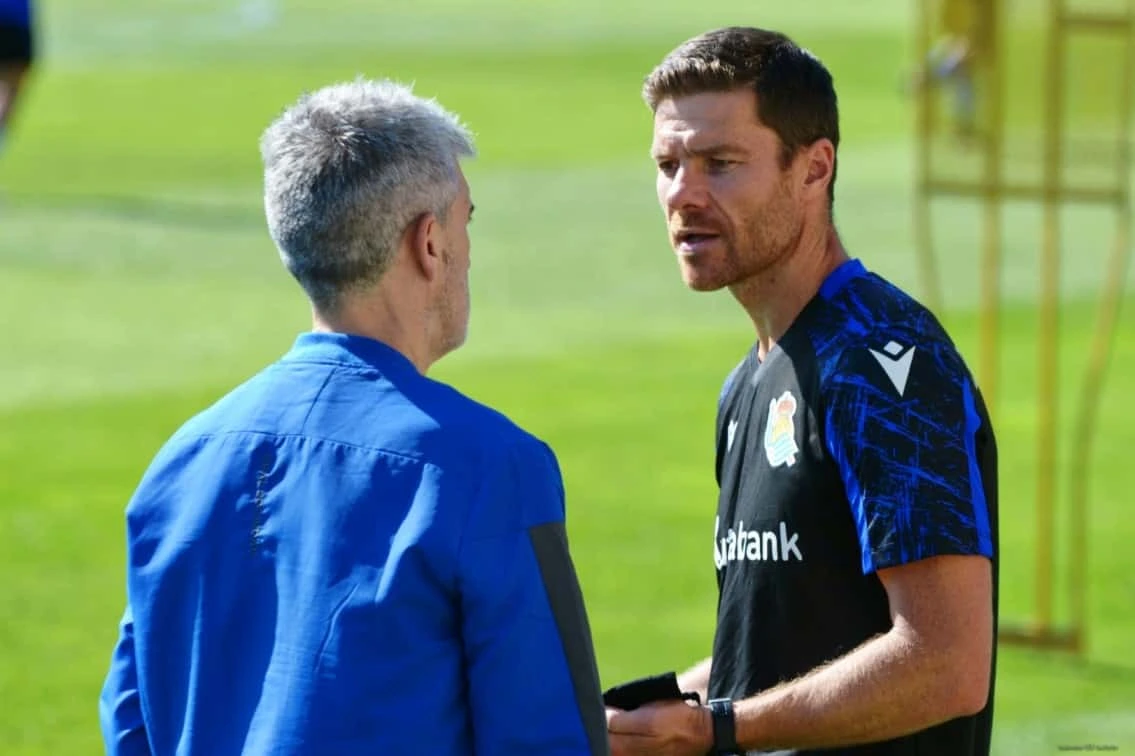A New Era Begins at the Bernabéu
If you’re a Real Madrid fan, you’re probably used to big changes—new stars, new managers, new dreams every season. But this summer feels different. Xabi Alonso, a club legend and midfield maestro, is back, this time as the man in charge. The buzz around Madrid is electric: what will Real Madrid under Alonso look like? Can he unite his modern football ideas with the victorious DNA of the club? And most importantly, will his style add more glory to the world’s most demanding football institution?
Let us go deep into what Xabi Alonso’s coming signals for Real Madrid, the way he will likely structure the team, and why supporters need to be eager and patient for the future.
From Midfield General to Tactical Visionary
It’s simple to recall Xabi Alonso’s Madrid midfield years—forever composed, forever in control, always ahead of the game. But what’s fascinating is the way he’s used the same qualities to be a great manager. Having made waves at Bayer Leverkusen, where he turned a talented but volatile squad into Bundesliga champions, Alonso has demonstrated himself to be more than just a retired great cruising on the fame of his playing days. He’s a shrewd, contemporary coach who’s learned from the greats.
Alonso’s football thinking is a synthesis. He’s absorbed it from Pep Guardiola (pressing and positional play), Carlo Ancelotti (adaptability and man-management), and Rafael Benítez (defensive discipline). At Leverkusen, he was able to combine those ideas into a style that was potent and exhilarating. And now, he’s bringing that same sort of energy and thinking to Madrid.
What’s Changing: Real Madrid Under Alonso — From Ancelotti to a New Era
Carlo Ancelotti’s second spell at Madrid was defined by flexibility and trust in experience. His teams could switch between a 4-3-3 and 4-4-2, often relying on the brilliance of veterans like Modrić, Kroos, and Benzema. Ancelotti’s approach was pragmatic—he knew how to get the best out of his stars and adapt to any situation.
Alonso, however, is expected to bring a more defined tactical identity. He’s likely to favor a back three, a double pivot in midfield, and a high-pressing, possession-based style. This isn’t just a change in formation—it’s a shift in philosophy, one that emphasizes collective movement, tactical discipline, and a proactive approach to both attack and defense.
Quick Comparison Table
| Aspect | Ancelotti’s Madrid | Alonso’s Madrid (Expected) |
|---|---|---|
| Formation | 4-3-3 or 4-4-2 | 3-4-2-1 or 3-5-2 |
| Style | Pragmatic, adaptive | Proactive, possession-focused |
| Defense | Back four, moderate pressing | Back three, high pressing |
| Midfield | Veteran control | Double pivot, energetic duo |
| Attack | Individual brilliance | Collective movement & width |
Alonso’s Tactical Blueprint: What Will Madrid Look Like?
The Back Three and Wing-Backs
The most apparent change will be the defense. Alonso’s Leverkusen team tended to play with three center-backs, which enabled them to be solid at the back and also provided the wing-backs with the liberty to go forward. Madrid will use something similar, with players such as Éder Militão, Antonio Rüdiger, Asensio and Huijsen playing in the defensive three.
The real zodiac stars of the system, though, are the wing-backs. Be any one Ferland Mendy, Dani Carvajal, or newcomers such as Alexander-arnold Huijsen, all of them will be asked to do anything—defend, overlap, supply crosses, and even supply opportunities from wide areas. Wing-backs in Alonso’s system are not merely defenders; they are playmakers and drivers.
The Double Pivot: Madrid’s New Midfield Engine
Those are the days when Toni Kroos and Luka Modrić controlled games through their passing and experience. Alonso is in, and the midfield will be organized on a double pivot—two midfielders functioning in unison to defend, regain possession, and create attacking chances.
Aurelien Tchouaméni and Eduardo Camavinga are the default choices here. Tchouaméni gives defensive steel and brains, and Camavinga gives energy, dribbling, and the ability to take lines. They will have the task of setting the tempo, marking the back three, and leading the attack.
Real Madrid Under Alonso: Attacking Freedom for the Stars
The beauty of Alonso’s system is that it gives attacking players the freedom to express themselves, but within a structured tactical framework. Imagine Kylian Mbappé up front as a central striker, Vinícius Jr. and Jude Bellingham playing behind him in the half-spaces. The three will be challenged to interchange positions, overload spaces, and play through voids behind defenders trying to deal with Madrid’s wing-backs.
- Mbappé can go wide or drop deep, with defenders needing to guess what he is going to do.
- Vinícius Jr. will have even more room to attack defenders, the wing-back overlapping to leave markers for dead.
- Bellingham will be the conduit, arriving late in the box or dropping into midfield to help build play.
This should make Madrid’s attack harder to defend against and more unpredictable.
What Makes Alonso’s Style Unique?

High Pressing and Intelligent Possession
Alonso’s Leverkusen played with intense pressing and calmness in possession. Madrid will press higher up the pitch, quickly winning the ball back and forcing opposition players into errors. In possession, they will look to construct from the back, using short balls and positional interchanges to build their way up the pitch.
This approach requires immense fitness and tactical structure but also guarantees Madrid control more games, dictate the rhythm, and do less defending deep within their half of the field.
Flexibility and Adaptability
One of Alonso’s strongest points is how open he is to flexibility. He’s not wedded to one style or shape—he’ll adapt based on the opponent, players at his disposal, and game situation. This is crucial at a team like Madrid, where the expectations are so high and every game matters.
Trust in Youth
Alonso boasts a good track record of developing young talent. At Leverkusen, he gave veteran positions to young players like Florian Wirtz and Jeremie Frimpong, turning them into stars. At Madrid, further playing minutes will be allocated to players like Arda Güler, Endrick, and other young talents. Alonso’s trust in young players may help Madrid build a team for the future as well as the present.
Real Madrid Under Alonso: Projected Lineup
To give you a sense of what Madrid might look like under Alonso, here’s a possible starting XI in his favoured 3-4-2-1 formation:
| Position | Player(s) |
|---|---|
| Goalkeeper | Courtois |
| Center-backs | Militão, Rüdiger, Asensio Huijsen |
| Wing-backs | Mendy, Carvajal, Alexander-Arnold |
| Double Pivot | Tchouaméni, Camavinga |
| Attacking Mids | Bellingham, Vinícius Jr. |
| Striker | Mbappé |
Of course, this will change based on form, injuries, and new signings, but it gives you an idea of the structure and key roles.
What Challenges Will Real Madrid Face Under Alonso?
No transition is ever easy, especially at a club such as Real Madrid. These are some of the challenges Alonso will have to endure:
- Transitioning to a Back Three: Certain players, especially full-backs and center-backs, will need to adapt to new roles and responsibilities.
- Balancing Stars and Youngsters: Madrid’s squad is chock-full of big egos. Alonso will need to balance egos, keep everyone motivated, and provide opportunities for young players.
- Sustaining High Pressing: Alonso’s team is physically demanding. Injuries and fatigue can become problematic if the team is not rotated.
- Replacing Veteran Leadership: With Kroos and Modrić leaving, new leaders will need to step forward—on and off the pitch.
Why Madrid Fans Should Be Excited
Even amidst turmoil, there is plenty to look forward to. Real Madrid under Alonso will provide a mix of tradition and innovation—a team that will play with passion, intellect, and a clear identity. Alonso understands the club’s culture, but he will not be afraid to push it forward
Personally, after watching Madrid experience all the eras, I simply cannot help but think this is where something magical starts. Alonso’s blend of tactics, understanding of players, and trust in young players may create one of the most memorable pages in club history.
Final Thoughts: A New Era Begins for Real Madrid Under Alonso
The appointment of Xabi Alonso is not so much a nod to the past—it’s a bold step forward into the future. His tactical superiority, adaptability, and love for Madrid make him the best man to guide the next generation by the hand. Will there be bumps along the road? Of course. But if Alonso’s track record is anything to go by, Madridista’s are in for a whirlwind, high-speed, and lucrative ride.
Is the Xabi Alonso era dawning? Leave your comments below.
Want to watch live football in HD for free? Check out our 2025 guide to the 20 best trusted streaming sites for every matchday moment.
Frequently Asked Questions – FAQs
Xabi Alonso is likely to favor a 4-2-3-1 or 3-4-2-1 formation, similar to his approach at Bayer Leverkusen, depending on the players available and the opposition.
Alonso emphasizes positional play, high pressing, and fluid ball movement — contrasting with Ancelotti’s more adaptive and player-led approach.
Midfielders like Jude Bellingham and Eduardo Camavinga could thrive due to Alonso’s system, which values intelligent positioning and pressing.
Yes, Alonso generally promotes an aggressive, possession-based style with structured pressing, aiming for quick transitions and vertical play.
While still early in his coaching career, Alonso has shown tactical maturity at Bayer Leverkusen, making him one of the most promising young managers in Europe.
A dedicated tactical analyst with over 10 years of experience studying European football’s elite leagues. Imran follows the Premier League, La Liga, Serie A, and Bundesliga with particular focus on managerial systems and tactical evolution. Watching 2-3 matches weekly across these competitions, he has developed deep insights into how different coaching philosophies translate across leagues and cultures. At Latest in Football, Imran specializes in breaking down complex tactical decisions and managerial appointments for everyday football fans.




